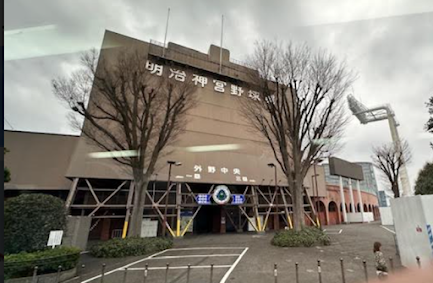Japan
March 21
We left Taiwan with a sea day to prepare for our much-anticipated visit to Japan, including six different ports.
Art Class
March 22
Finally, we arrive at Kagoshima, the south end of Japan's four main islands. Our adult Daughter
Caroline would love to come here someday and will be looking forward to this
part of the blog.
As we sailed into the harbor, we got a good look at the Sakurajima volcano
just a few miles away. What appeared to
be a cloud sitting on top, we were assured it was the volcano letting off
steam. It has been active since 1955 to
the present. One school very near the
base of the volcano requires its students to wear crash helmets as they arrive
and leave school.
The Japanese authority notified the ship that passport control would be strict upon arrival. 100% of the passengers must leave the ship and be fully cleared by passport control, which took over three hours. We had an early tour and were on our way within an hour, by 11.00am.
A bus took us to Chiran, a small town about one hour from the port. A charming Japanese tour guide introduced us to Japan's culture, brief history, and
geography.
As we arrived at Chiran Gardens- [Chiran Samurai Lane], we were escorted to a group of houses that have been preserved and traditional Japanese homes so we could see how they lived and their culture.
Each home was elaborately adorned by traditional Japanese landscaping. We even got a traditional Japanese hot tea treat. We were blessed with very
pleasant weather, about 70 degrees and sunny.
Our second stop was a museum, but I was unprepared for what the museum had to portray. Tokko Heiwa Haikan [Chiran Peace Museum] celebrates and is dedicated to the 1,000-plus Kamikaze pilots who were hand-picked to be trained and perform suicide bombing missions on Aisa and West forces. While these missions happened before I was born, I grew up in a culture hating the Japanese for these very successful killing missions. This is a lot to unpack for me, compounding on the American cemetery we visited in Manila.
I managed to catch up with Merry. She finished dinner in the Grand
Dining Room. We attended Brain Teasers [2nd place] and a great show by Becky Portera, a Welch Adele tribute act, which I surprisingly liked very much [I have never followed Adele].
March 23
Another sea day allowed me to take it easy, as the drugs made me
dozy. We attended art class, had a light
lunch, and attended the lecture about where Technology is taking us “AI,” with a short
nap between each.
March 24
On our cruise, we make many ports of call. Some are places we have never heard of, and some have some point of interest. Today
was one of those days that many of the passengers anticipated. You could feel a buzz in the air.
We pulled into the port of Tokyo, Japan, there was no doubt we were in a great place, worthy of all the excitement. As I have said, we are not city lovers, but we were eager to explore this city. The view from our window says
it all.
This city boasts a 13 million population, rising to over 20 million when counting neighboring cities.
We had a 3-hour city tour planned for the afternoon, so we decided to
head out early on our own. The city
provided information maps and shuttle busses to the local train station and
shopping mall. We arrived at the mall
soon after 9am and had been warned it would not be open until 10am, so we
wandered around, looking in the windows, checking out the prices, and seeing what was familiar. The mall had free Wi-Fi, and I could confirm that it was 150 yen to the dollar.
Soon, the shops started opening, and a flood of locals came bustling
in. Many went straight to the food
court or specialty fast foods. All were
polite, well-behaved, and very respectful.
Everything was clean and well organized.
The food court looked light; it had only been built yesterday. It sparkled.
We picked up a few items and took a walk around outside. The architecture is elaborate and
modern. The city was almost totally
wiped out in the Second World War, and everything has evolved since
then. We took the shuttle back to the
ship and had a simple lunch.
Our city tour took us first to the Tokyo Tower,
originally built as a TV transmission tower,
leaving the Tokyo Tower to enjoy
the views of thousands of visitors every day. And we certainly did enjoy the views. A wonderful way to get acquainted with this
model is a modern city with immaculate management and workers.
The rest of the tour took us through and around the major buildings and
saw what would take a whole book to recant.
March 25
Today marks the end of this segment. 206 passengers will leave, and 209 new passengers will join. Our new voyage will make several more stops in Japan and South Korea before moving to China, ending in Hong Kong.
While the ship’s crew was busy repairing the ship for our new guests, we took an excursion to Kamakura, a seaside town about fifty miles east of Tokyo along the coast. Kamakura was the original capital of Japan before it moved to Tokyo.
The day was a steady drizzle, but we were well prepared for almost any weather. Our first stop was Big Budda, which is over forty feet tall and needs no further
explanation.
Japan is famous for its cherry trees, and the season is just starting.
We got to see very colorful couples.
After meandering around this special place, we looped onto the main touristy shopping street. The tour was over six hours, and this was our chance to grab local food. We are not very adventurous, and egg sandwiches were strongly recommended. They boast the best apple pie in the world; sadly, we did not find either, and with almost nothing in English, the opportunity got away from us, and we ended up quite puckish all the way back to the ship at 4pm, only to find nothing open until 6.30 dinner. Good job. I had a yogurt stashed in the fridge, and we found an old sandwich in the coffee area.
At dinner, we dined with another couple from Yorkshire, England. Fresh new conversion with very interesting
people. The evening show introduced the whole production team for the new arrivals. Always a lot of fun.
March 26
Our ship arrived in Shimzu to pouring rain, the type that soaks
you. This is the closest location to
Mount Fuji, about 40 miles away. We
wrapped up warm with umbrellas in hand and set out on our tour.
From the ship, Mt Fuji should have been larger than life, but this was not to
be today. The clouds were low and it was
misty. None the less, we headed inland in search of the elusive mountain closeup.
Mt Fuji is the largest mountain in Japan at over 12,000 ft. It is considered an active volcano. It last erupted 300 years ago and has an
average eruption every 30 years, so it is long overdue. We stopped at a shrine ½ way up the mountain,
a staging post for these pilgrims heading to the top. The mountain was still shy.
The public toilets are first class with heated seats.
After a walk around, dodging the downpours, we traveled back to the coast to view the Pine Tree Forest, a magical and mystical place.
It is supposed to have the best photo opportunity for the mountain in the background. It was not to be. I am suspicious that there is no mountain, so I will need to be content to view Google poses of the mountain and wonder.
From google
Overnight was a very rough passage with winds rocking the boat at 65 mph
headwinds. The ship was tightly battened
down.
The morning's arrival in Kobe, near Osaka was delayed an hour from 11 am
to 12 noon. This gave me plenty of time to start the new art classes with a hotshot with a fresh outlook on art. We spent 90 minutes practicing pencil
techniques with the goal of drawing a snow monkey.
Inside the wall, the inner building was where the similarity ended. A very impressive wooden palace in typical Japanese architecture almost defies the eyes.
We stayed overnight in Kobe so we could spend a second day. When I checked our tour tickets, we had booked the same tour again. It
had a different title but the same destination, so we decided to go ashore alone. This is not my favorite thing
to do in a strange country with a different language, customs, and money, but we
did a little research and bravely headed out.
We quickly found local shops that led us into a long covered street
that spans the whole waterfront, about two miles long. We picked up a few toiletries and personal
needs from places that took credit cards.
We found one of the hundreds of 7-Eleven convenience stores. It had been recommended to try their egg
salad sandwich, so we did and WOW, what a wonderful delight. The egg salad seems to have been whipped into a delicious filling and wrapped in a very fresh bun. We were sold.
We fund this 100-yen shop. The exchange rate is 150 yen to the USD, so 100 yen is about 66 cents.
Once the yarn shop was found, it did not have what she needed but she
got good directions to a department store that had a better selection about ½ mile
further.
Merry found everything she wanted and more, and we started meandering our
way back to the port. We stopped in a café
for a simple lunch [more egg salad as it happens] and then through China town
and back to the port.
We really felt we got to see and know Japan today and got 12,000 steps in.
March 28
Today we arrived in Hiroshima.
There was a quiet hush around the ship in anticipation of what we are
about to see and hear on tour today.
Our tour first took us to a lovely Japanese park Shukkeien Garden, a
stunning, peaceful place with classical Japanese landscaping and lake. We took many photos and everyone seems like a
masterpiece.
Next we visited the museum that has to be seen to understand the horror that
occurred. We can only hope it was not in
vein. The museum gets over 1 million visitors per
year and was very crowded, but solum.
This visit has to be taken in context with the brutal bombing attacks Japan started in Asia and Hawaii.
In the next post of this blog, you will read about our visit South Korea
and back to Japan before visiting China.
It appears the subscribe system is not working so just revisit this site
once per week and hit refresh.



































































Comments
Post a Comment